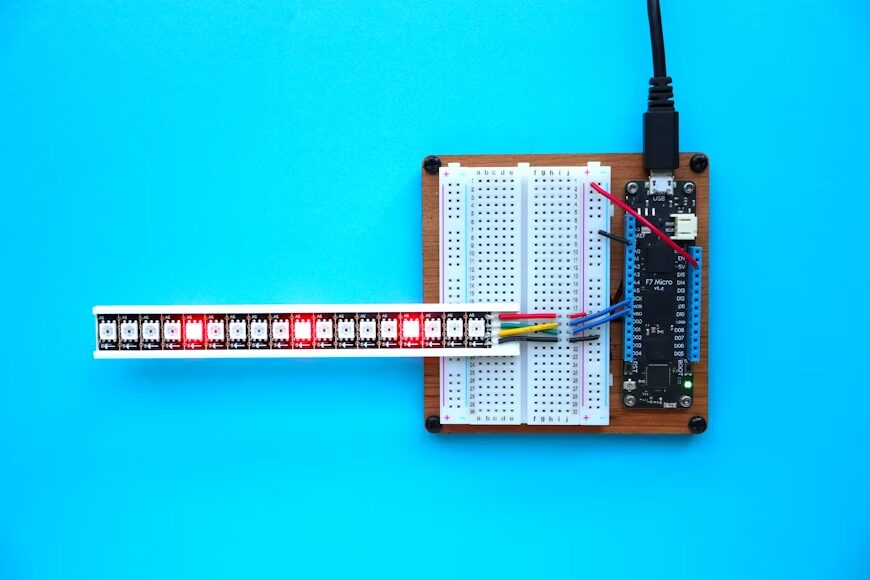Don’t let connector failures cost you thousands on your next electronics project
Choosing the right connector for your application is important. Pick the wrong one and it could destroy your design.
The global connector market is projected to be over $71.7 billion by 2024. With that kind of money being spent on connectors, you’d think it would be easy to get this right, but it’s not.
Why?
Engineers tend to only focus on the most obvious, basic specifications and completely overlook the factors that really matter. It’s no wonder products fail, customers get upset and budgets get blown.
The good news is that it doesn’t have to be like that.
This article will share the factors that truly matter when selecting connectors for electronics applications.
What you’ll discover:
- Why The Right Connector Selection Matters More Than Ever
- Current Rating: The Foundation That Everyone Gets Wrong
- Environmental Factors: The Silent Connector Killers
- Signal Types: Why One Size Doesn’t Fit All
Why The Right Connector Selection Matters More Than Ever
Before we get into the details, let’s just spend a moment talking about how critical connectors are today and will continue to be.
The connector market is booming right now.
Industry reports show that the connector market grew by 3.9% CAGR in 2024 alone. But here’s what’s really interesting…
The big growth drivers are coming from the demand for miniaturized, high-performance connectors. Everyone is after smaller, more feature packed devices. And that puts extreme pressure on connector choice.
Pick the wrong connector and your product won’t work. Pick the right one and you’re way ahead of the game.
Connector selection has never been more important.
Current Rating: The Foundation That Everyone Gets Wrong
Current rating is just the starting point, not the end goal.
You need a connector with a current rating that can handle the maximum current you plan to run through it. But current ratings assume best case conditions that never exist in real life.
Let’s look at the factors that really matter…
Derating factors
Temperature, vibration, contamination all derate the current carrying capacity of a connector.
Contact resistance
Higher contact resistance equals more heat and voltage drop.
Wire gauge compatibility
Connector current ratings assume maximum wire size.
The smart way?
Choose a connector rated for at least 25% more current than your max requirement.
Environmental Factors: The Silent Connector Killers
Electrical overload kills a lot of connectors, but it’s actually environmental conditions that destroy more.
Temperature extremes wreak havoc on connector materials.
Plastic housings crack and break in the cold. Metal contacts expand and contract with heat causing loose connections. Even temperature rated connectors can fail when cycled rapidly between extremes.
Moisture, contamination and chemical attack also kill connectors left and right.
Water causes corrosion. Dust and debris create high-resistance paths. Oil and harsh chemicals attack housings.
To survive, you need to match environmental protection to real world conditions.
- IP ratings for dust and water
- Sealed connectors for harsh environments
- Corrosion-resistant plating for outdoor
- Vibration-resistant designs for mobile
Don’t just look at the specs. Ask, “what’s the worst-case scenario this connector will face?”
Signal Types: Why One Size Doesn’t Fit All
Connectors need to be matched to signal type requirements. Different signals have completely different connector needs.
Power needs robust contacts and thick conductors.
High-frequency digital signals need controlled impedance, low crosstalk.
Analog signals need excellent shielding and low noise.
Mixed signal connectors require careful design to keep interference out.
High frequency signals need special attention…
- Coaxial connections for RF
- Differential pairs for high-speed digital
- Ground planes for EMI control
Don’t try to force different signal types into a connector that’s not designed for it. Fortunately, the worldwide electronic components marketplace has specialized connectors for power, RF, digital, analog, low noise, etc. that are engineered specifically for each signal type, making it easy to find the right solution for mixed signal applications.
Mechanical Considerations: Beyond Just Plugging In
Mechanical design determines connector lifespan.
Mating cycles vary a lot between connector types.
USB connectors might last thousands of insertions, but a board-to-board connector for assembly might only need to survive dozens.
Mounting method also affects both reliability and assembly cost:
- Through-hole mounting is strong
- Surface mount saves space but limits current
- Panel-mount allows user access but needs robust housing
Gender and keying prevents incorrect connections using proper polarization and coding.
Don’t neglect these basics. A connector that can’t be assembled reliably in manufacturing is pointless.
Cost vs Performance: The Balancing Act
Price matters, but not the way you think.
Cheap connectors aren’t actually cheap when you add in the cost of field failures, assembly time and inventory management.
Premium connectors often save money by reducing assembly time, eliminating field failures and simplifying inventory.
The smart approach is to calculate total cost of ownership, not just unit price.
Reliability: What The Spec Sheets Don’t Tell You
Connector reliability is tricky because it depends on so many factors.
Most manufacturers list MTBF (mean time between failures), but that’s for best case lab conditions. Real world reliability depends on installation quality, environment, design margins, quality control.
What really matters is proven track record in similar applications.
Check industry forums and application notes. Talk to other engineers who have used the same parts.
Advanced Selection Criteria
Certain applications need special consideration:
Medical devices require biocompatible materials, sterilization compatibility.
Automotive requires AEC-Q qualified parts.
Aerospace systems need to work in vacuum and extreme conditions.
Industrial automation requires connectors to handle electrical noise and chemical exposure.
Each industry has specific standards and test requirements. Don’t assume general purpose connectors will cut it in specialized applications.
Making The Final Decision
Ok, with all this info, how do you actually choose?
Start with a requirements matrix:
- List electrical requirements (voltage, current, frequency)
- Define environmental conditions (temperature, moisture, vibration)
- Specify mechanical constraints (size, mounting, mating cycles)
- Set cost targets, volume needs
- List any special certifications required
Then ruthlessly prioritize:
Mark requirements as “must have” or “nice to have.”
Eliminate any connectors not meeting critical requirements. Use a scoring system for the rest.
Finally, validate your choice:
Order samples and test in your actual application. Don’t rely on datasheets. Real world testing finds issues specs can’t predict.
Essential Takeaways
Electrical specs like current rating, voltage rating and impedance are important but don’t determine connector selection on their own.
Environmental conditions kill more connectors than electrical overload.
Signal types demand different connector approaches. Power, high-frequency digital, analog all have different needs.
Mechanical design details like mating cycles, mounting method, gender and keying are often overlooked but have a huge impact on reliability and cost.
Cost calculations must include total ownership expenses, not just unit price.
Connector market is growing rapidly due to demand for smaller, higher-performance solutions.
That creates opportunities and challenges for designers.
Take the time to really understand your true requirements.
Test in your actual application before committing to production.
Choose suppliers with proven experience in your industry and application space.
Get connector selection right and your products will work for years.
Get it wrong and you’ll be doing redesigns under pressure with angry customers and blown schedules.
The choice is yours.



































